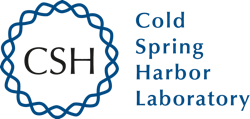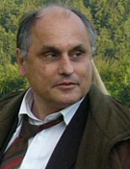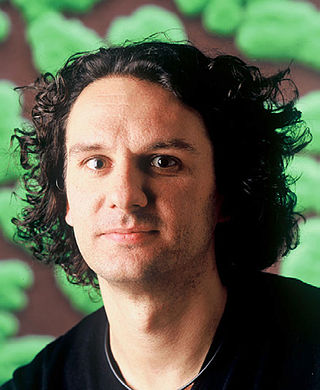Professional activities
Spector is a pioneer in unraveling our understanding of the inner workings of the cell nucleus. [4] His early investigations centered on the unusual chromosome structure of dinoflagellates. [5] Recent studies in his laboratory are focused on examining the organization and regulation of gene expression in living mammalian cells. His laboratory has developed approaches to elucidate the spatial and temporal aspects of gene expression and in identifying and characterizing the function of nuclear retained long non-coding RNAs.
His most seminal research accomplishments include the direct visualization in living cells of the recruitment of factors involved in gene expression to active genes; [6] the development of a biochemical fractionation approach to purify a sub-nuclear domain (nuclear speckles) and characterize its protein constituents; [7] [8] the development of a live cell imaging system to visualize a stably integrated genetic locus and follow in real-time its mRNA and protein products; [9] [10] [11] the elucidation of a rapid-response mechanism of regulating gene expression through RNA nuclear retention; [12] identification of a mechanism by which a single genetic locus can produce a long nuclear retained non-coding RNA and a small cytoplasmic tRNA-like transcript, [13] the identification and characterization of a long nuclear retained non-coding RNA that is involved in organizing a sub-nuclear organelle (paraspeckles), [14] [15] and determining that knockout or knockdown of the lncRNA Malat1 results in the differentiation of mammary tumors and a significant reduction in metastasis. [16]
In addition, Spector has co-edited numerous microscopy techniques manuals (i.e. Basic Methods in Microscopy, [17] Live Cell Imaging: A Laboratory Manual [18] ), and a treatise of The Nucleus, [19] that are used in laboratories throughout the world.

The cell nucleus is a membrane-bound organelle found in eukaryotic cells. Eukaryotic cells usually have a single nucleus, but a few cell types, such as mammalian red blood cells, have no nuclei, and a few others including osteoclasts have many. The main structures making up the nucleus are the nuclear envelope, a double membrane that encloses the entire organelle and isolates its contents from the cellular cytoplasm; and the nuclear matrix, a network within the nucleus that adds mechanical support.

A retrovirus is a type of virus that inserts a DNA copy of its RNA genome into the DNA of a host cell that it invades, thus changing the genome of that cell. After invading a host cell's cytoplasm, the virus uses its own reverse transcriptase enzyme to produce DNA from its RNA genome, the reverse of the usual pattern, thus retro (backwards). The new DNA is then incorporated into the host cell genome by an integrase enzyme, at which point the retroviral DNA is referred to as a provirus. The host cell then treats the viral DNA as part of its own genome, transcribing and translating the viral genes along with the cell's own genes, producing the proteins required to assemble new copies of the virus. Many retroviruses cause serious diseases in humans, other mammals, and birds.

The central dogma of molecular biology is an explanation of the flow of genetic information within a biological system. It is often stated as "DNA makes RNA, and RNA makes protein", although this is not its original meaning. It was first stated by Francis Crick in 1957, then published in 1958:
The Central Dogma. This states that once "information" has passed into protein it cannot get out again. In more detail, the transfer of information from nucleic acid to nucleic acid, or from nucleic acid to protein may be possible, but transfer from protein to protein, or from protein to nucleic acid is impossible. Information here means the precise determination of sequence, either of bases in the nucleic acid or of amino acid residues in the protein.

A spliceosome is a large ribonucleoprotein (RNP) complex found primarily within the nucleus of eukaryotic cells. The spliceosome is assembled from small nuclear RNAs (snRNA) and numerous proteins. Small nuclear RNA (snRNA) molecules bind to specific proteins to form a small nuclear ribonucleoprotein complex, which in turn combines with other snRNPs to form a large ribonucleoprotein complex called a spliceosome. The spliceosome removes introns from a transcribed pre-mRNA, a type of primary transcript. This process is generally referred to as splicing. An analogy is a film editor, who selectively cuts out irrelevant or incorrect material from the initial film and sends the cleaned-up version to the director for the final cut.

Cold Spring Harbor Laboratory (CSHL) is a private, non-profit institution with research programs focusing on cancer, neuroscience, plant biology, genomics, and quantitative biology.

A morphogen is a substance whose non-uniform distribution governs the pattern of tissue development in the process of morphogenesis or pattern formation, one of the core processes of developmental biology, establishing positions of the various specialized cell types within a tissue. More specifically, a morphogen is a signaling molecule that acts directly on cells to produce specific cellular responses depending on its local concentration.
Tom Maniatis, is an American professor of molecular and cellular biology. He is a professor at Columbia University, and serves as the Scientific Director and CEO of the New York Genome Center.
snRNPs, or small nuclear ribonucleoproteins, are RNA-protein complexes that combine with unmodified pre-mRNA and various other proteins to form a spliceosome, a large RNA-protein molecular complex upon which splicing of pre-mRNA occurs. The action of snRNPs is essential to the removal of introns from pre-mRNA, a critical aspect of post-transcriptional modification of RNA, occurring only in the nucleus of eukaryotic cells. Additionally, U7 snRNP is not involved in splicing at all, as U7 snRNP is responsible for processing the 3′ stem-loop of histone pre-mRNA.
Heterogeneous nuclear ribonucleoproteins (hnRNPs) are complexes of RNA and protein present in the cell nucleus during gene transcription and subsequent post-transcriptional modification of the newly synthesized RNA (pre-mRNA). The presence of the proteins bound to a pre-mRNA molecule serves as a signal that the pre-mRNA is not yet fully processed and therefore not ready for export to the cytoplasm. Since most mature RNA is exported from the nucleus relatively quickly, most RNA-binding protein in the nucleus exist as heterogeneous ribonucleoprotein particles. After splicing has occurred, the proteins remain bound to spliced introns and target them for degradation.
Nuclear transport refers to the mechanisms by which molecules move across the nuclear membrane of a cell. The entry and exit of large molecules from the cell nucleus is tightly controlled by the nuclear pore complexes (NPCs). Although small molecules can enter the nucleus without regulation, macromolecules such as RNA and proteins require association with transport factors known as nuclear transport receptors, like karyopherins called importins to enter the nucleus and exportins to exit.

In molecular biology, heat shock factors (HSF), are the transcription factors that regulate the expression of the heat shock proteins. A typical example is the heat shock factor of Drosophila melanogaster.
The perinucleolar compartment (PNC) is a subnuclear body characterized by its location at the periphery of the nucleolus. The PNC participates in the patterned compartmentalization inside the nucleus to organize the specialized functions. It is almost exclusively found in oncogenic cells and enriched with RNA binding proteins as well as RNA polymerase III transcripts.

Nuclear Enriched Abundant Transcript 1 (NEAT1) is a ~3.2 kb novel nuclear long non-coding RNA. It is also known as Virus Inducible NonCoding RNA (VINC) or MEN epsilon RNA. It is transcribed from the multiple endocrine neoplasia locus.

Thomas Cremer, is a German professor of human genetics and anthropology with a main research focus on molecular cytogenetics and 3D/4D analyses of nuclear structure studied by fluorescence microscopy including super-resolution microscopy and live cell imaging. Thomas Cremer is the brother of the German physicist Christoph Cremer and Georg Cremer, Secretary General of the German Caritas Association.

MALAT1-associated small cytoplasmic RNA, also known as mascRNA, is a non-coding RNA found in the cytosol. This is a small RNA, roughly 53–61 nucleotides in length, that is processed from a much longer ncRNA called MALAT1 by an enzyme called RNase P. This RNA is expressed in many different human tissues, is highly conserved by evolution and shares a remarkable similarity to tRNA which is also produced by RNase P, yet this RNA is not aminoacylated in HeLa cells. The primary transcript, MALAT1, appears to be upregulated in several malignant cancers. Another small RNA that is homologous to mascRNA, called menRNA, is processed from another long ncRNA called MEN beta.

HSURs are viral small regulatory RNAs. They are found in Herpesvirus saimiri which is responsible for aggressive T-cell leukemias in primates. They are nuclear RNAs which bind host proteins to form small nuclear ribonucleoproteins (snRNPs). The RNAs are 114–143 nucleotides in length and the HSUR family has been subdivided into HSURs numbered 1 to 7. The function of HSURs has not yet been identified; they do not affect transcription so are thought to act post-transcriptionally, potentially influencing the stability of host mRNAs.

MALAT 1 also known as NEAT2 is a large, infrequently spliced non-coding RNA, which is highly conserved amongst mammals and highly expressed in the nucleus. MALAT1 was identified in multiple types of physiological processes, such as alternative splicing, nuclear organization, epigenetic modulating of gene expression, and a number of evidences indicate that MALAT1 also closely relate to various pathological processes, ranging from diabetes complications to cancers. It regulates the expression of metastasis-associated genes. It also positively regulates cell motility via the transcriptional and/or post-transcriptional regulation of motility-related genes. MALAT1 may play a role in temperature-dependent sex determination in the Red-eared slider turtle.

Tom Misteli is a Swiss-born (Solothurn) cell biologist who has pioneered the field of genome cell biology. He is the Director of the Center for Cancer Research at the National Cancer Institute, NIH.

Klaus Weber was a German scientist who made many fundamentally important contributions to biochemistry, cell biology, and molecular biology, and was for many years the director of the Laboratory of Biochemistry and Cell Biology at the Max Planck Institute for Biophysical Chemistry in Göttingen, Germany. This institute has been renamed the Max Planck Institute for Multidisciplinary Sciences.

Richard Allen Young is an American geneticist, a Member of Whitehead Institute, and a professor of biology at the Massachusetts Institute of Technology. He is a pioneer in the systems biology of gene control who has developed genomics technologies and concepts key to understanding gene control in human health and disease. He has served as an advisor to the World Health Organization and the National Institutes of Health. He is a member of the National Academy of Sciences and the National Academy of Medicine. Scientific American has recognized him as one of the top 50 leaders in science, technology and business. Young is among the most Highly Cited Researchers in his field.














